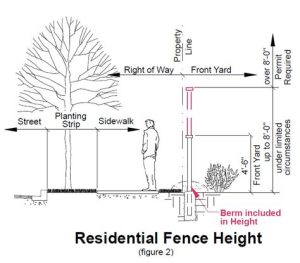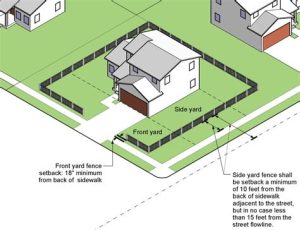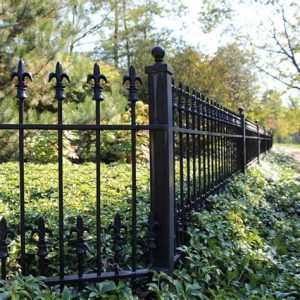Discover key factors influencing fence installation costs, including materials, permits, contractor tips, and etiquette for tipping the installation crew.Installing a fence can significantly enhance your property’s value, privacy, and security, but understanding the costs involved is essential for any homeowner. From materials to labor expenses, various factors can influence the overall price of your fence installation. Additionally, local permits and zoning regulations may impact your project timeline and budget. In this blog post, we’ll explore the key elements that contribute to fence installation costs, provide tips on selecting the right contractor for the job, and discuss the importance of tipping the installation crew. Whether you’re a first-time installer or looking to replace an existing fence, our guide will help you navigate the complexities and make informed decisions every step of the way.
Factors Affecting Fence Installation Costs
When planning for a fence installation, it’s essential to understand the various factors that can impact the overall cost. By being informed, you can better budget for the project and avoid unexpected expenses.
- Material Type: The choice of material significantly affects price. For instance, wood, vinyl, and metal all come with different costs, durability, and maintenance requirements.
- Labor Expenses: The labor cost will vary based on the complexity of the installation and the rate charged by the contractor. Highly skilled labor may come at a premium but can ensure a higher quality finish.
- Size and Length: The larger the area to be fenced, the more materials and labor will be needed, driving up costs accordingly.
- Land Terrain: Uneven or rocky terrain might require additional work and resources to ensure the fence is installed correctly.
- Permits and Regulations: Depending on your location, you may need permits or have to comply with local zoning laws, which can add to costs if required.
Materials and Labor Expenses
When it comes to fence installation costs, one of the key components is the materials and labor involved. Understanding these expenses can help you budget effectively for your fencing project.
The materials you choose will greatly influence the overall price. Common options include wood, vinyl, metal, and chain link. Each material has its own price range, durability, and aesthetic appeal. For instance, while wood might offer a rustic charm, it may require more maintenance over time compared to vinyl, which is generally more expensive but easier to care for.
On the other hand, labor expenses can vary based on several factors, such as local market rates, the complexity of the installation, and the experience of the contractors you hire. Typically, you may expect labor costs to account for about 30-50% of the total installation costs. It’s crucial to get multiple quotes and check the credentials and reviews of the contractors you are considering to ensure you receive quality workmanship.
Permits and Zoning Regulations Impact
The impact of permits and zoning regulations on fence installation cannot be overstated. Before starting your project, it’s crucial to understand the legal requirements that may restrict your fencing options. In many areas, local authorities require homeowners to obtain a permit before erecting a fence. Failure to comply can lead to fines or forced removal of the fence.
Furthermore, zoning laws may dictate the types of materials you can use or the height and style of your fence. For instance, residential zoning may allow for a certain height in the backyard but impose restrictions in the front yard. It’s essential to check with your local municipal authority to ensure that your planned installation adheres to all building codes and regulations.
Finally, understanding these regulations early in your planning process can save you time and money in the long run. Conducting thorough research and obtaining the necessary permits will prevent unexpected delays and additional costs from arising once your project is underway.
Tips for Choosing the Right Fence Contractor
Choosing the right fence contractor is crucial for ensuring that your fence installation goes smoothly and meets your expectations.
- Check Qualifications: Ensure that the contractor is licensed, insured, and has the necessary qualifications to perform the work. This can protect you from liability in case of accidents during the installation.
- Read Reviews: Look for online reviews and testimonials from past clients. Websites such as Yelp, Angie’s List, or Google Reviews can provide insights into the contractor’s reliability and quality of work.
- Request Multiple Quotes: Obtain estimates from at least three contractors to compare prices, services offered, and timelines. This will help you gauge the market rate for your specific fence project.
- Ask for References: A reputable contractor should be able to provide you with references from previous clients. Don’t hesitate to contact these references to inquire about their experience.
- Confirm Experience: Make sure the contractor has prior experience in installing the type of fence you desire, whether it’s wood, vinyl, chain-link, or wrought iron. Each material comes with its own set of challenges.
- Review Contract Details: Before signing any contracts, carefully review all terms and conditions, including payment schedules, warranties, and the scope of work. Ensure that everything is clearly outlined.
By following these tips, you can significantly increase your chances of finding a reliable and skilled fence contractor who will bring your vision to life.
Remember that investing the time to choose wisely will not only save you money in the long run but also ensure that you are satisfied with the finished product.
Etiquette for Tipping Fence Installation Crew
When it comes to tipping for services rendered, it’s essential to understand the norms and expectations, especially in the world of fence installation. Tipping is a way to show appreciation for quality work, and it can also motivate the installation crew. However, knowing when and how much to tip can be somewhat perplexing. Here’s a quick guide to help you navigate the etiquette of tipping your fence installation crew.
Typically, if you are pleased with the craftsmanship and overall service, a tip of 10% to 20% of the total installation cost is considered appropriate. However, the amount can vary based on the complexity of the project and the level of service provided. For instance, if the crew went above and beyond—arriving early, staying late, or dealing with tricky terrain—a higher tip is warranted.
It’s also important to consider how the crew is compensated. If they are working for a larger company, they may not receive the full benefits of your tip. In such cases, you could express your gratitude in other ways, such as providing refreshments, writing a positive review, or directly thanking the crew leader. In the end, showing appreciation—whether through a monetary tip or verbal acknowledgment—is a great way to thank your fence installation team for their hard work.
Frequently Asked Questions
What factors influence the cost of fence installation?
The cost of fence installation is influenced by factors such as the type of material used (wood, vinyl, chain link, etc.), the length and height of the fence, labor costs in your area, and any additional features such as gates or decorative elements.
How can I estimate the total cost for my fence installation?
To estimate the total cost for your fence installation, calculate the total footage needed, choose the material, and contact local contractors for quotes. Additionally, factor in the cost of permits if required in your area.
Are there any hidden costs associated with installing a fence?
Yes, hidden costs can include expenses for land clearing, soil testing, removal of old fencing, and any necessary permits. It’s essential to ask your contractor about all potential expenses upfront.
What is the typical range for tipping fence installers?
The typical range for tipping fence installers is generally between 10-20% of the total installation cost, depending on the quality of work and your satisfaction with the service provided.
Is tipping mandatory for fence installation?
Tipping is not mandatory, but it is a common practice to reward good service. If you are pleased with the work, a tip can be a nice gesture to show appreciation.
What should I consider when deciding how much to tip?
When deciding how much to tip, consider the complexity of the job, the level of professionalism demonstrated by the installers, the overall quality of work, and your budget.
Can I negotiate the cost of fence installation before tipping?
Yes, you can negotiate the cost of fence installation before tipping. It’s important to discuss pricing openly with your contractor and ensure you are both clear on costs before the installation begins.





